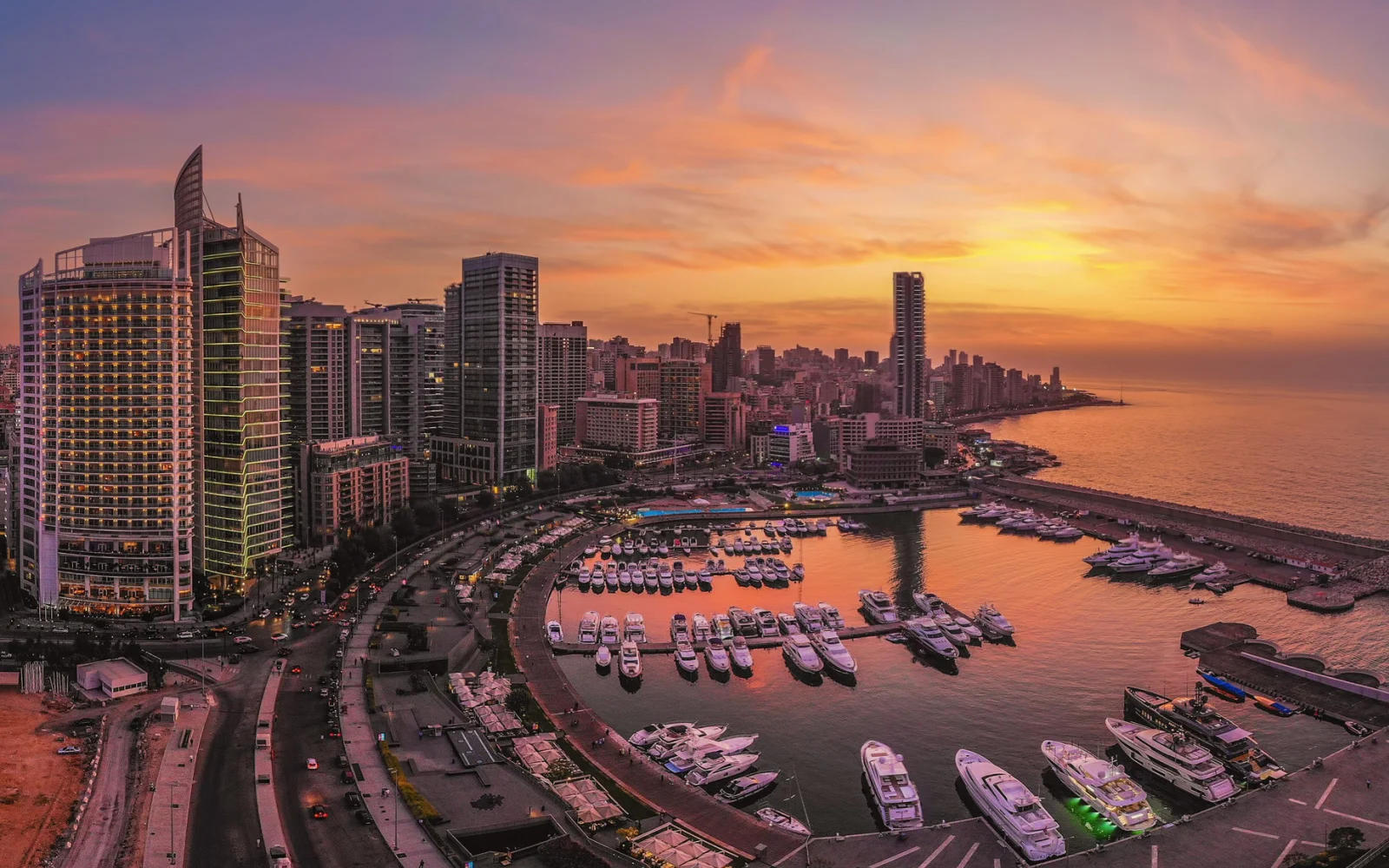What's the best time to visit Lebanon?
The best time to visit Lebanon is from May to August, when the weather is warm and dry, perfect for sightseeing and beach trips. Early summer (May and June) offers cooler temperatures and fewer crowds, while July and August are ideal for coastal activities.
Hotel rates during this peak season are reasonable, and the mostly dry weather ensures smooth travel plans, with cooler retreats available in the mountain regions.
Snowy mountains, Mediterranean beaches, a warm, thriving culture, and fertile valleys with rolling hills and sprawling coastal plains make Lebanon truly spectacular to visit. But what’s the best time to visit?
The answer really depends on your goals for the trip and what you want to do while you’re in the country. We’ll show you the overall best, cheapest, least busy, and worst time to visit Lebanon so you can plan the ideal trip to this welcoming Middle Eastern destination.
The Overall Best Time to Visit Lebanon
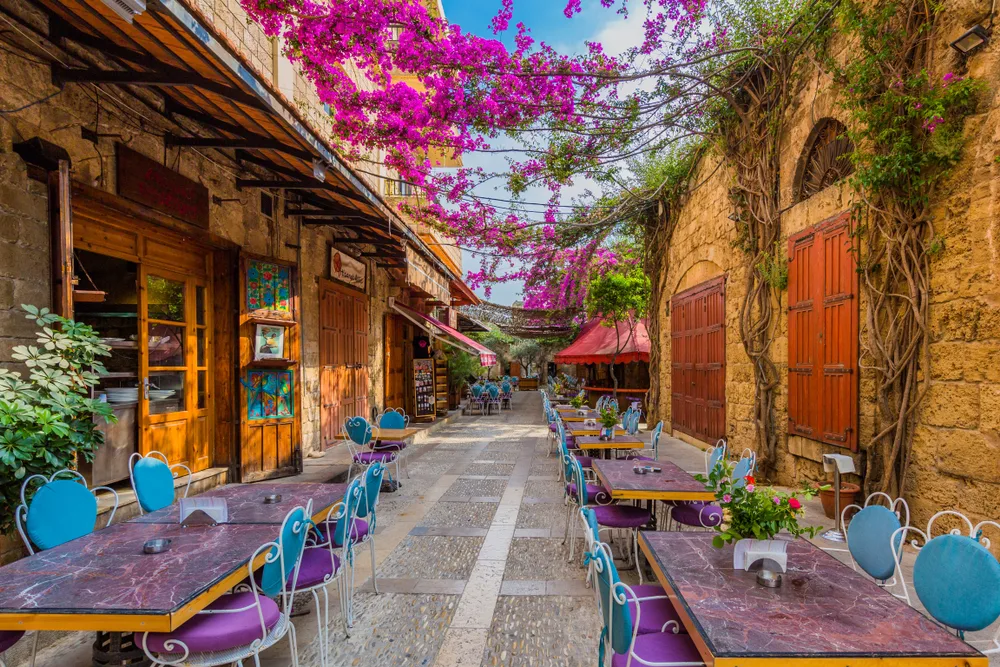
Restaurants in Old Souk, Byblos in Lebanon May 2017/OSTILL is Franck Camhi/Shutterstock
Overall, we think the best time to visit Lebanon is from May to August. During this time, you’ll experience warm, dry weather that’s absolutely perfect for sightseeing, touring cities and farms, and visiting the beach.
From May to August, Lebanon is truly at its best. The skies are stunningly clear with no rainfall, the sunshine is warm and pleasant, and tourism in Lebanon really comes to life.
May and June are less busy than July and August. They also boast slightly cooler temperatures ranging from 71F to 77F. It’s great weather for walking through Beirut or visiting a farm in the Beqaa Valley.
July and August are when Lebanon really heats up, making them the ideal months for coastal trips to the beach. August is the hottest month in Lebanon, with temperatures averaging around 82F and highs around 86F.
The prices during this peak season aren’t bad, either. Here’s a look at the average hotel rates from May to August:
- May: $44-$117/night
- June: $46-$122/night
- July: $50-$132/night
- August: $48-$128/night
Only May sees any measurable rainfall (around 0.2″) during this peak period. June through August is very dry, ensuring your plans and entertainment won’t be derailed by storms!
If the heat is a little much for you, venturing into the mountains during late summer is the perfect solution. Temperatures at these higher elevations are much cooler, averaging around 62F-72F from May to August.
Cheapest Time to Visit Lebanon
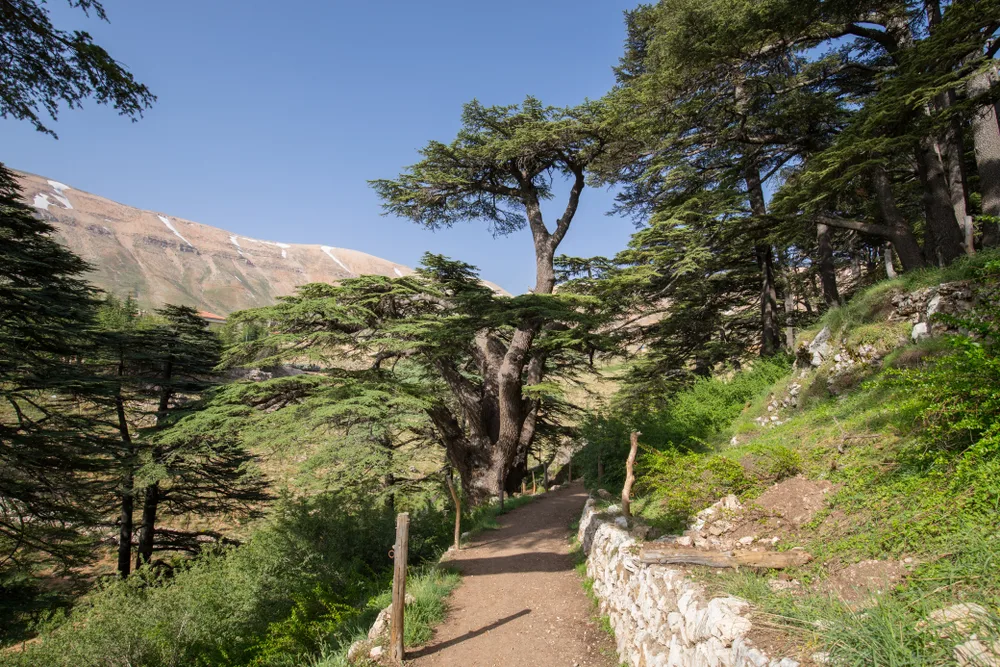
Marco Ramerini/Shutterstock
The cheapest time to visit Lebanon is from January to April, with hotel rates dropping to averages as low as $42/night and airfare to Lebanon hitting annual lows.
This winter and spring period can make for an excellent visit, especially if you’re sticking to a strict budget or want to avoid the warmer weather of summer and early fall.
Lebanon hotels know that fewer people come to the country during the winter and spring, so hotel rates take a welcome dip during these seasons to entice more travelers to come.
While average hotel rates ranging from $50 to $132/night in busier seasons, the more affordable room rates from January to April can be a great reason to come during this time.
You can expect to pay somewhere between $42 and $112 per night from January to April, with March being the absolute cheapest month to visit Lebanon.
- January: $43-$112/night
- February: $42-$110/night
- March: $41-$109/night
- April: $43-$112/night
The cheapest month to fly to Lebanon isn’t totally agreed-upon, but estimates from Expedia, Kayak, and Cheap Flights highlight February and April as the absolute cheapest months for Lebanon airfare.
During the cooler winter and spring period, you can expect some rain (more in January and February) that tapers off to an inch or so by March and April.
Temperatures won’t be as cold as you’d think for winter – January and February average around 58F, with March hitting 61F and April reaching 66F in Beirut.
Least Busy Time to Visit Lebanon
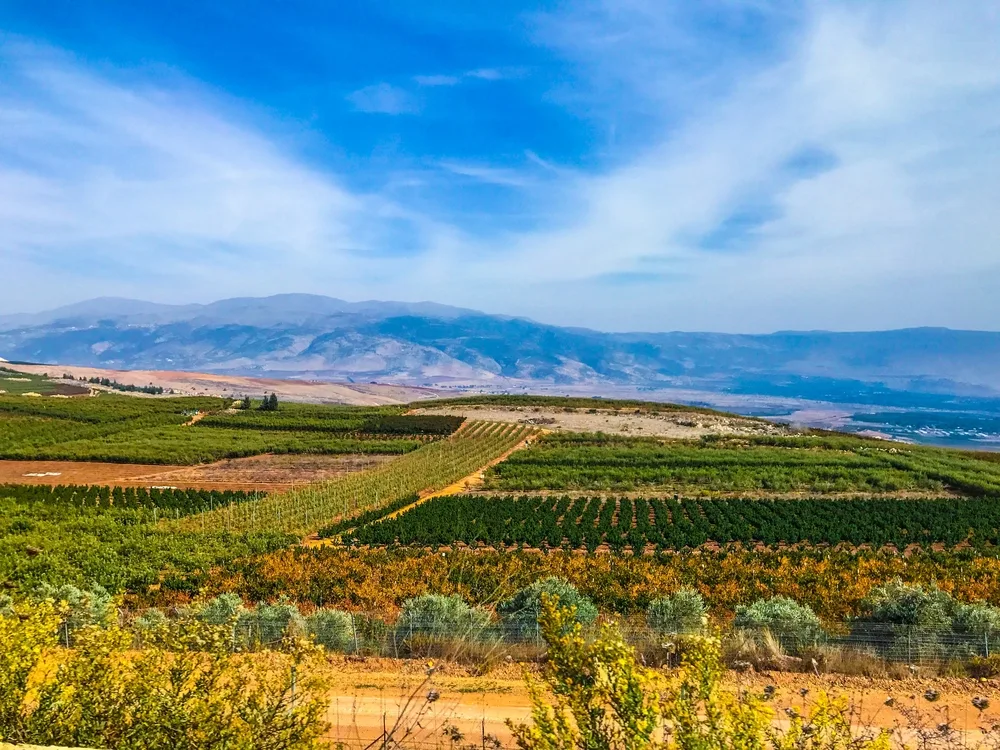
Ola chahrour/Shutterstock
The least busy time to visit Lebanon is from November to January, when fewer tourists arrive as the rainfall increases and the weather gets cool with lows in the 50s.
This late fall/early winter period is the slow season for Lebanon. This is the best time to visit Lebanon if you want to avoid crowds and enjoy a more laid-back, relaxing visit.
It’s when you’ll find the fewest tourists coming to the country because some of the most popular attractions – the beach, walking tours, and agritourism – are sought out in warmer weather.
Temperature and rainfall are factors to consider here. With daily averages ranging from 58F to 68F, it’s far from cold, but chilly on breezy days outdoors.
Rainfall is relatively heavy during this time, which can be a bigger problem for your plans. November gets about 2″ of rain, December sees about 2.8″, and January is the wettest with almost 3″ throughout the month.
Hotel prices may be the saving grace for visiting between November and March, when nightly rates span from $42 to $112 per night.
- November: $42-$112/night
- December: $42-$111/night
- January: $43-$112/night
It’s one of the cheapest times of year to visit Lebanon (along with January to April), but you’ll want to prepare for rain and make some indoor plans.
Worst Time to Visit Lebanon

Ali Mahmoud Zaher/Shutterstock
The worst time to visit Lebanon is from November to March, as it’s the rainiest period of the year with lots of overcast days and cooler temperatures, especially in the mountains.
About 70% of the total rainfall in Lebanon occurs from November to March, making it by far the wettest and cloudiest time of year to visit. January, the wettest month in Lebanon, receives about 3″ of rain throughout the month.
December gets around 2.8″. Rain totals taper off in the spring and November averages around 2″ during the month. Unless you’re planning on spending a lot of time indoors, that makes for a less enjoyable visit that has to be planned around regular showers and storms.
Temperatures from November to March start around 68F in November and dip down to 58F by January and February. Things slowly warm up to around 61F in March.
One upside to visiting between November and March is the lower cost of hotels during this period. Since fewer people come from November to March, nightly rates drop to their lowest of the year.
Here’s a look at the average prices for hotel rooms in Lebanon from November to March:
- November: $42-$112/night
- December: $42-$111/night
- January: $43-$112/night
- February: $42-$110/night
- March: $41-$109/night
While it’s not a terrible idea to visit Lebanon from November to March, it likely won’t be the best time for a trip since you’ll be dealing with a lot of rain and more limited activity options.
Things to Consider
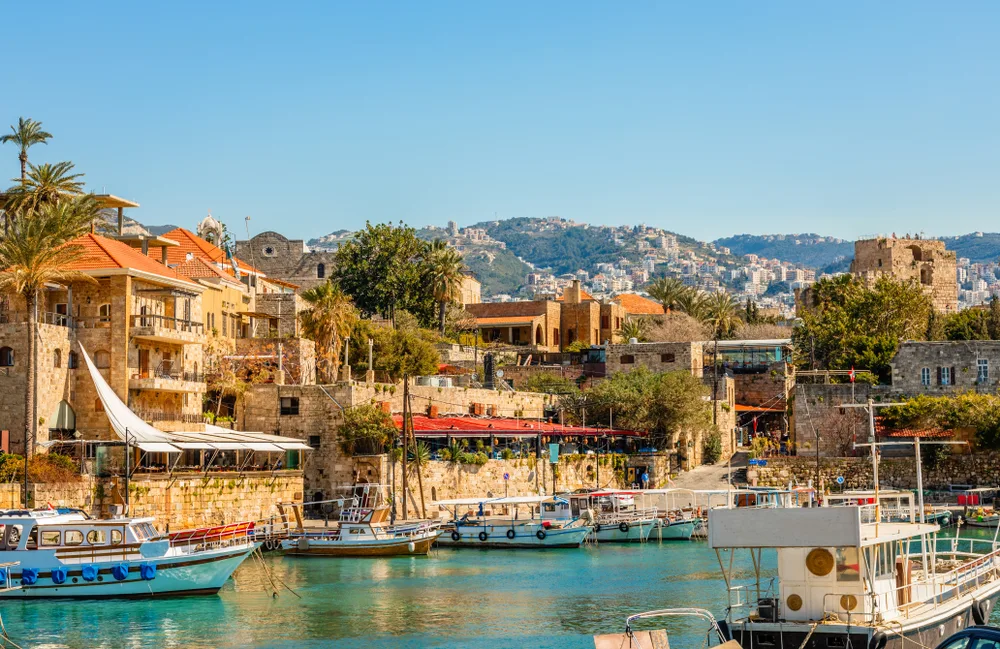
Vadim_N/Shutterstock
Before you visit Lebanon, there are a few things you should think about to plan the perfect stay. Here are some helpful travel tips to keep in mind if you’re hoping to visit Lebanon soon!
- Make sure it’s safe to visit. International situations are always shifting, but right now, Lebanon is not very safe to visit. Crime, kidnapping, terrorism, civil unrest, and armed conflict along the borders and refugee settlements have warranted a level 3 travel advisory from the U.S. Department of State, warning people to reconsider travel at this time.
- Check if you need a tourist visa. You’ll need a temporary tourist visa to visit Lebanon if your stay will be longer than one month. Visits of less than 30 days don’t require a visa as long as you have a U.S. passport that is valid for at least 6 more months.
- Visit the cleanest beaches. Lebanon has some really stunning beaches, but pollution and bacteria can be a problem in some areas near Beirut. A recent report found that 24 of 36 beaches here are safe to swim in, but 8 beaches had high levels of bacteria and pollution. Some of the cleanest beaches are Byblos, Tyre, Naqoura, and Anfeh.
- Three languages are spoken. Visiting Lebanon is unique because most of the citizens here speak Arabic, English, and French. That means language barriers won’t be a problem for many travelers and it can make communicating during your stay so much easier!
- Bring U.S. dollars. U.S. dollars are accepted in most places in Lebanon. They’re also a more stable currency than the Lebanese pound, which has a constantly-changing exchange rate that means you’ll spend a lot more if you trade in dollars for pounds.
Frequently Asked Questions
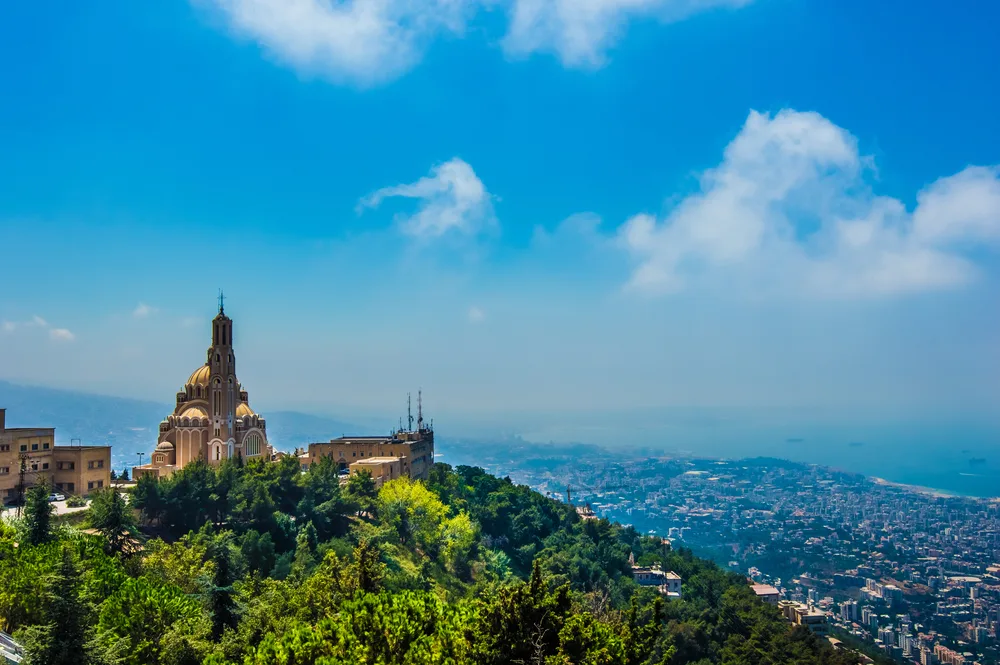
Gregory Zamell/Shutterstock
People have a lot of questions about the best time to visit Lebanon, from the most enjoyable weather to how long the ideal trip here should be.
Check out the most frequently asked questions below to learn more and start planning your stay!
What is the best time to visit Beirut?
The best time to visit Beirut is from May to August, when temperatures are warm, conditions are dry, and activities and attractions are in full swing. Beirut really comes to life during the late spring and summer months.
There's very little, if any, rain and it's the perfect time to relax on the beach, visit souks, try new restaurants, or check out museums and galleries.
What is the hottest month in Lebanon?
August is generally the hottest month in Lebanon and the peak of summer heat. In Beirut, temperatures average around 82F but reach daily highs around 86F in August.
The mountainous areas of Lebanon are much cooler, even during the heat of August. Temperatures average around 72F and peak around 81F in higher elevations here.
How long can Americans stay in Lebanon?
Americans with a valid U.S. passport (valid for at least 6 more months) can spend up to 30 days in Lebanon without a tourist visa. With a tourist visa, Americans can stay in Lebanon for up to 90 days with an extension.
So, What’s the Best Time to Visit Lebanon?
Let’s recap the best time to visit Lebanon so you can start planning the perfect trip. Ideally, you’ll go between May and August when the weather is prime with warm, sunny days and almost no rain.
If budget is your main priority, cooler January to April is when you’ll find the lowest prices on hotels and cheaper airfare options.
Try going between November and January (though it’s cooler and wet this time of year) for the least-crowded trip.
Keep in mind that the November to March period is the worst time to visit. About 70% of Lebanon’s total rainfall occurs during this period and you’ll have to plan more indoor activities.
As long as you consider and weigh the current safety recommendations and pay attention to travel advisories before you go, you’ll be able to enjoy a beautiful and memorable trip to the Land of the Cedars almost any time of year.



